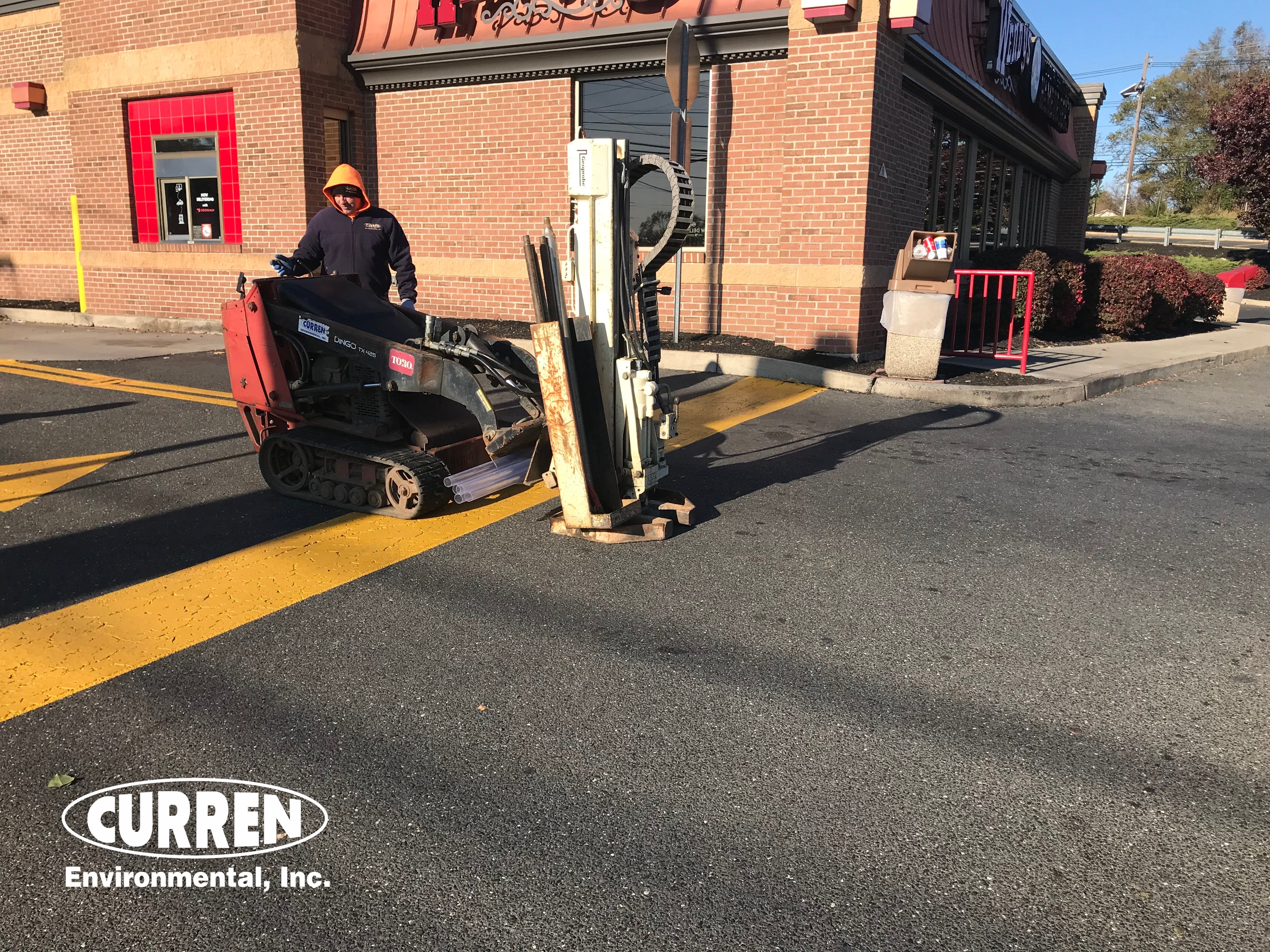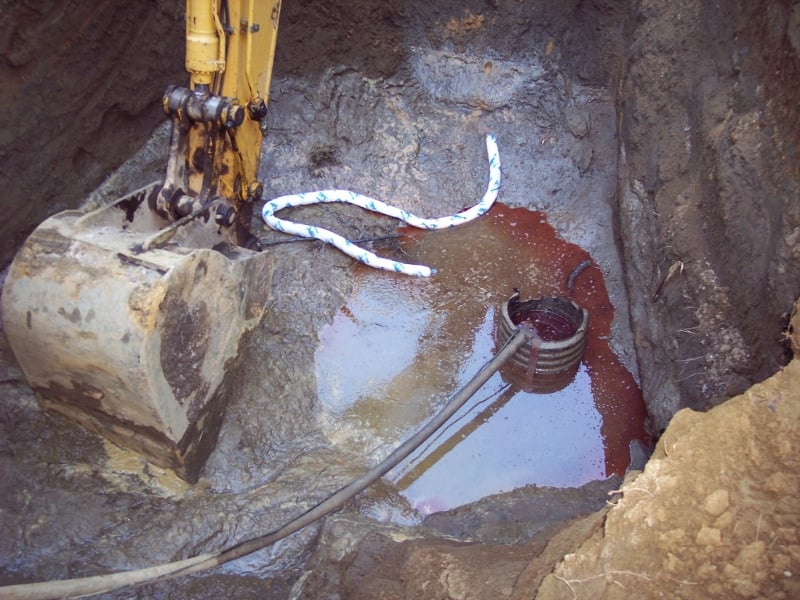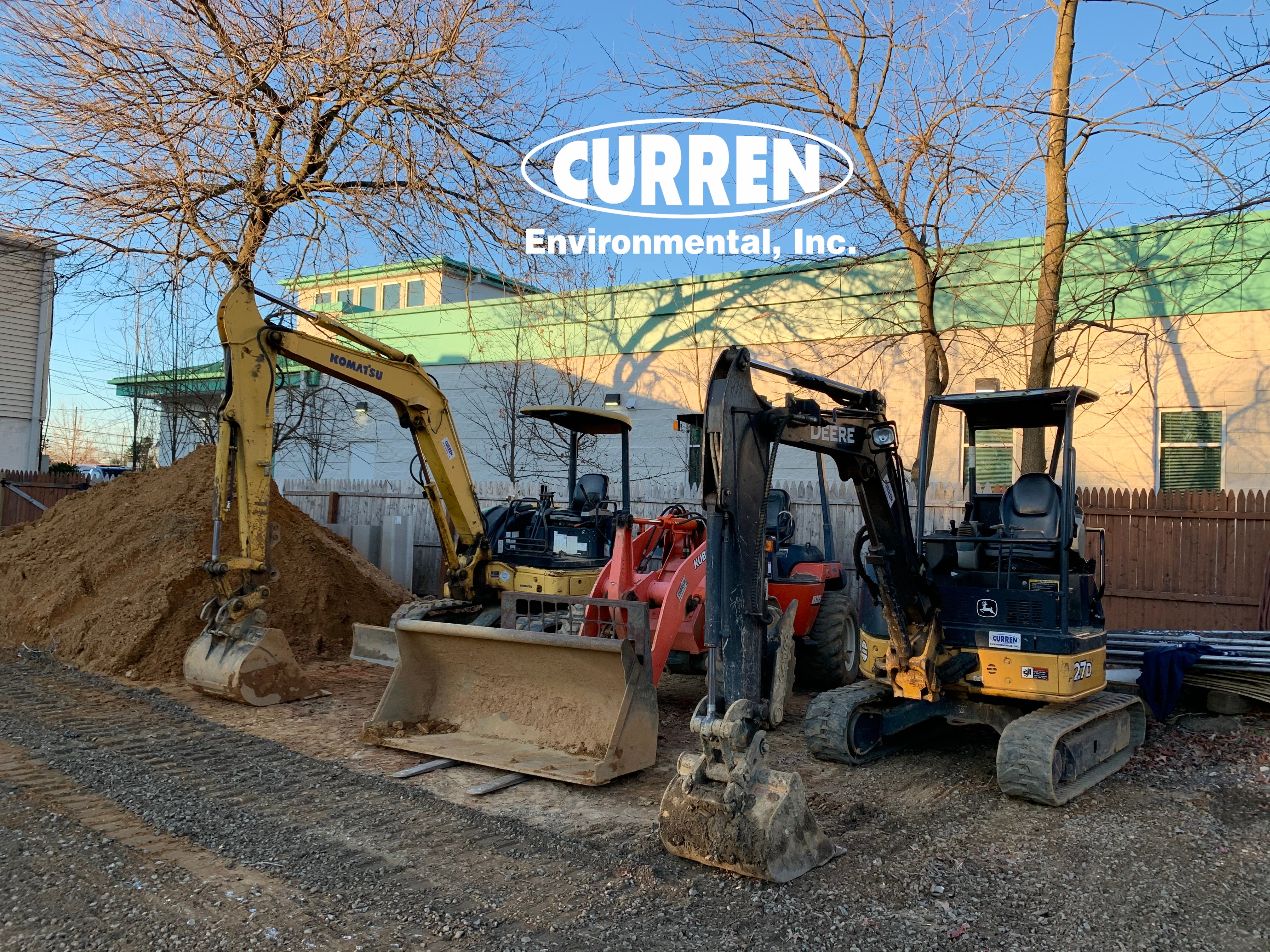Phase 2 Environmental Site Assessment FAQs
What is a Phase II ESA?
A Phase II Environmental Site Assessment (ESA) is the second step in the environmental due diligence process. The first step is a Phase I ESA. A Phase II ESA addresses recognized environmental conditions (RECs) identified in a Phase I ESA to determine if contamination is or is not present. A Phase II ESA can include soil, soil vapor, and/or groundwater sampling, which will help determine if there is a presence or absence of hazardous substances and petroleum products on the site in soil or groundwater. Findings of the Phase II can also be used in negotiating the property value or require the owner to remediate when contamination is found which is a Phase III. Many sites will never require a Phase II ESA, because the Phase I would not have found any areas to investigate. 
You can’t skip over a Phase I and jump into a Phase II because the Phase I outlines where and what to test for. Jumping into a Phase II without the Phase I road map means you are guessing and hoping you have all your bases covered.
When are Phase II ESAs performed?
Phase II ESAs are typically conducted prior to purchase or transfer of a property but may also be conducted for an existing owner. That way, if environmental contamination is identified, the purchaser can make an informed decision regarding their willingness to manage identified risks associated with the property.
What field work is typical for a Phase II ESA?
There is no “typical” Phase II ESA because no two sites are exactly the same. Phase II ESA scopes of work are specific to the site and the site history and operations. Former farm land (orchards) would trigger historical pesticide and herbicide testing, where this would not be required on sites that never had historical agricultural operations. Some common contaminants for commercial and industrial sites include volatile organic compounds, semi-volatile organic compounds, PCBs, and metals.

Some common Phase II tasks can include Geophysical Surveys (Ground Penetrating Radar) to look for undisclosed buried tanks.
You may also be tasked with soil and groundwater sampling for a Phase II.

Number and location of samples collected will depend on the size of the property, the area(s) of known or suspected contamination, geology of the property, and other property characteristics.
Sampling equipment requirements will be affected by the geology of the property and project (future use) objectives. For example, the type of drill rig used for collecting soil and groundwater samples is dependent on the type of underlying soil and/or rock. Alternatively, a drill rig may not be needed if only surface or shallow soil samples are being collected.
Indoor air and/or sub-slab vapor sampling will be performed if greater insight into vapor intrusion and indoor air quality is needed. This has become more common with a recent focus on indoor air quality.
Additional assessments will be included when necessary. For example, a geophysical survey may be conducted to determine if underground tanks or other buried features are present. Some purchasers may also request surveys for asbestos containing materials, lead-based paint, or a wetlands assessment.
That used property you are buying has a history. Every property has a past, and sometimes that past includes environmental contamination, which was legally caused if it happened before environmental regulations. The 1970’s gave us Love Boat, Disco and the EPA. Environmental due diligence is an essential part of any real estate purchase. Buyers need to find out if there contamination on the site caused by a former owner or prior use of the site. Former industrial sites that are being repurposed for residential use, requiring developers to assess the property for contamination before people can live there.
What is the 1st step in Environmental Due Diligence?
The 1st step in environmental due diligence is historical and regulatory research along with a visual environmental site assessment to ascertain if there are what are called ‘Recognized Environmental Conditions’ on site.” This is what a Phase I ESA is meant to encompass.
Why would something as exhaustive as a Phase I require a Phase II?
Sometimes a Phase I ESA finds the need to do more than research and more than a visual assessment of a property. A Phase II is the testing that can confirm or deny the presence of contamination. Curren was contracted to perform a Phase I for a medical office building. A physician owned the property and was selling the building and practice. Out Phase I found out the site was a gas station in the past The owner (dr) had no record of the former operations. So Curren was tasked with performing a geophysical of the property to locate any UST. Multiple USTs were found, which required additional Phase II work which was soil borings and yes, we found gasoline contamination.
What Is a Phase 2 Environmental Site Assessment
Where Phase I ESAs involve record searches, and visual site inspections, Phase II assessments are more intensive evaluation of a site. In our previous example you could use Ground Penetrating Radar to locate suspect buried storage tanks. Also like this previous example, the collection of soil and groundwater samples from the site would be a very typical Phase II task.
A Phase I Site Assessments follow a standard procedure (ASTM), where a Phase II ESAs are designed for the unique attributes of the property. The Phase II testing could include surficial and sub-surficial soil analysis, groundwater analysis, or installing monitoring wells, or indoor air sampling, mold sampling, asbestos sampling, lead sampling, radon.”
Phase II Questions?
Ask the Experts
888-301-1050
When Is a Phase II ESA Required?
A Phase II ESA is required when the results of a Phase I determine the likelihood of potential environmental contaminants on the property or possible from an offsite source.
There are also high-risk properties where a Phase II would be considered SOP, these sites include former agriculture, dry cleaning or retail gasoline outlet
Who Performs a Phase II ESA?
An Environmental Professional from an engineering and environmental firm would perform the Phase II ESA. The professional should have at least one of these qualifications:
- A federal, state or tribal-issued certification or license (Professional Geologist, Professional Engineer or other certification to perform environmental inquiries) and three years of relevant full-time experience
- A Baccalaureate degree or higher in science or engineering and five years of relevant full-time work experience
- 10 years of relevant full-time work experience
Who Pays for a Phase 2 Environmental Site Assessment?
Typically, the buyer performs the Phase II, many times the cost is split between buyer and seller.
How Long Does a Phase 2 Environmental Assessment Take?
Duration tends to be based on how extensive the scope of work is being performed. 4 to 6 weeks is a good average but it can also extend months.
How Long Is a Phase II good for?
As long as the risk of contamination from the investigated area is no longer present. Case in point, a dry cleaner would require a Phase II, but lets say the dry cleaner closes and the space becomes retail. The risk of future dry cleaning compounds end when the dry cleaner ceases operation and chemicals and equipment are removed from the site.
Much Does a Phase 2 Environmental Assessment Cost?
Well if no Phase II is required nothing. But since we are talking about sites where a Phase II is required expect a small Phase II to cost under $10,000. More complex sites with multiple areas to test, well expect maybe $20,000.00
Is there a Phase III
Yes, a Phase III is very much a thing and entails addressing any problems found in the Phase II. You may need to remediate or institute controls to manage the contamination.
When do you do a Phase I or Phase II.
Due diligence can be performed by owner or buyer. In practice most due diligence say 80% is done by the buyer and may be required by their bank or lending institution. The most prudent timing for due diligence is to start early, plan for the worst and hope for the best.

Why is a Phase II more expensive than a Phase I?
A Phase II is more complex on average than a Phase I. Since a Phase II is testing, you will need specialized equipment to acquire samples. You will also need an environmental professional to oversee the investigation. This environmental professional could have performed the Phase I but is not returning with $120,000 worth of drilling equipment to collect soil and groundwater samples. You can spend thousands of dollars in soil and water testing, then you need the sample data reviewed, interpreted, samples listed on a map and then an opinion regarding what the findings mean.
Phase II are extremely important as they confirm problems BEFORE the property is transferred. Many companies will pitch low-cost Phase I reports to get the more lucrative Phase II work. The photo below shows contamination found during a Phase II, a Phase II, remediation was required and cost about $90,000 to remediate.
Your next question is what does a Phase II cost?
That depends on what you are testing and where. Recent Phase II projects Curren has worked on had costs in the $7,000.00 to $37,000.00 range. Be aware when a Phase II is required the costs is significantly more than a Phase I cost.

At Curren we own and operate equipment necessary in Phase II investigations. We perform Ground Penetrating Radar (GPR) surveys, drilling and excavation with in house equipment and personnel. This leads to cost 20% or more below firms that subcontract these services.


